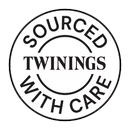
Livelihoods and Land
Climate

We recognise the risk climate change poses to our business and our supply chains and to reduce our emissions we have set near- and long-term science-based emissions targets, and committed to achieving net-zero by 2050.
Our targets and commitment are in line with limiting global warming to within 1.5°C, which has been independently validated and approved by the Science Based Targets initiative (SBTi).
Our near- and long-term targets across net zero for Energy & Industry (E&I) and Forest, Land and Agriculture (FLAG) are as follows:
Near-term targets:
- Net-zero: We are committed to reducing absolute E&I Scope 1, 2 and 3 GHG emissions 42% by 2030 from a FY2020 base year.
- FLAG: We are committed to reducing absolute FLAG scope 3 GHG emissions 30.3% by FY2030 from a FY2020 base year.
Long-term targets:
- Net-zero: We are committed to reducing absolute E&I Scope 1, 2 and 3 GHG emissions 90% by FY2050 from a FY2020 base year.
- FLAG: We are committed to reducing absolute FLAG Scope 3 GHG emissions 72% by FY2050 from a FY2020 base year.
These targets reflect our ambition to act responsibly and drive change across our value chain to tackle climate change.

Addressing climate change is particularly important for the gardens, farms and people that grow our tea and herbs in our supply chains, as extreme weather and natural disasters, like heat waves, irregular rainfall, flooding and drought, continue to affect the sowing and growing of healthy crops and the livelihoods of communities who rely on them.
Our initial focus will be on the areas where we can make the biggest difference, which is why the Net Zero Steering Group comprises leads in the areas of manufacturing, procurement, logistics, supply chain, environmental sustainability and social impact.
Our own operations – Scope 1 and 2
In our own operations, we generate approximately 2% of our total carbon emissions mostly from natural gas (Scope 1) and indirect emissions associated with the purchased electricity (Scope 2). To reduce our emissions we’re focused on identifying and implementing energy savings and manufacturing efficiencies, as well as switching to renewable energy.
We have already implemented a number of efficiencies across our two main manufacturing sites, Andover in the UK and Swarzedz in Poland, including installing LED lighting throughout, which uses approximately half the amount of energy than the previous fluorescent lighting, and we will use our building energy management systems (EMS) to identify areas for further improvements.
For example, in the UK where we also completed an energy audit prior to installing our EMS, we have upgraded our chiller and dust extraction systems as well as two Voltage Power Optimisation Units to drive energy savings. We also installed a new robotic (Automated Guided Vehicles) palletiser system, which has reduced the amount of energy needed to power the system by more than 75% compared to the previous conveyor system in our UK site. In Swarzedz, our factory is already highly automated, with a number of AGVs, and energy efficient.
As part of switch to renewable energy we have now installed solar panels at both Andover and Swarzedz, with plans to add additional units to our car parks and our new warehouse. In Swarzedz, we have also installed a Tri-generation system, which converts natural gas to electrical energy that is less carbon intensive, delivering a significant amount of the electricity needed to power the site. When fully operational it is estimated that our panels and Tri-generation system will supply up to 30% of the energy required to power our sites. For the remaining energy that we need across our operations, we will look to transition to energy providers who generate renewable energy via national grids.
Our supply chain –Scope 3
In our supply chain, where the vast majority of our emissions are, we need to work collaboratively across the sector with our stakeholders, advocating the importance of setting carbon reduction targets and assessing their emissions and decarbonisation strategies.

We’re also working hard to minimise our packaging materials, using less and where possible using more sustainable alternatives, increasing the recycled content and removing single-use plastic, and in doing so also making sure more of our packaging is recyclable. By 2025, we have committed to ensuring that all our consumer packaging is recyclable or reusable and our tea bags are compostable. We have already made significant progress but recognise that there is always more work to be done.
When it comes to logistics, it accounts for a very small part of our Scope 3 emissions. We ship our raw ingredients from our sourcing countries to our production sites rather than air freighting them. When it comes to products being transported to customers, we’re looking at using ways to optimise our inbound and outbound journeys, minimising the use of empty trucks; using jumbo trailers, thereby reducing the number of journeys we have to make; as well as switching from road freight to rail freight; and looking at alternative fuels, to reduce our emissions.


We source our tea and herbs from gardens, estates and smallholders in more than 40 countries.
Farming communities, especially smallholders, are increasingly on the frontline of climate change and climate-related environmental challenges, like water scarcity and poor soil health. Therefore, we will continue to work in partnership with suppliers and farmers to support change in communities where we source our tea and herbs from through specific projects that aim to reduce carbon emissions and improve biodiversity and soil health.

We will then use the learnings for this programme to inform our strategy to reduce our Scope 3 emissions, with the aim of rolling out this pilot and its findings to our other sourcing countries.
In doing so, we hope that it will help support producer’s livelihoods while at the same time playing a part in reducing the carbon emissions in our supply chain.

